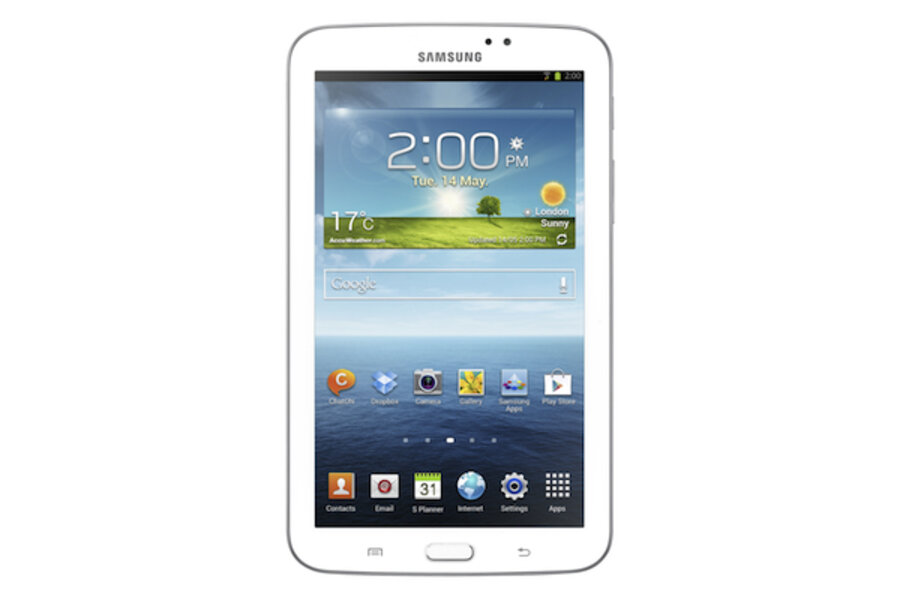Galaxy Tab 3: Everything you need, but little that you want
Loading...
Last spring, Samsung launched the Galaxy Tab 2, an Android-powered tablet priced at $250. Today, Samsung has taken the wraps off the Tab 2's successor, the Galaxy Tab 3. The Tab 3 (not exactly a rousing name) is relatively well-equipped: 7-inch screen, 1.2 GHz dual core processor, 3-megapixel camera rear camera and 1.3 -megapixel front camera, 8GB or 16GB of storage, the Android 4.1 OS, and a thinner build than the Tab 2.
Samsung will aim for a May launch date for the Wi-Fi Tab 3; a 3G version will follow in June.
It's worth pointing out that the reaction to the Galaxy Tab 3 – and how do we put this politely? – hasn't exactly been ecstatic.
The device is "underwhelming," says TechCrunch, with a spec list that "sounds like it could’ve been released a year or two ago." Ars Technica points out that the Tab 3 sure does look a whole lot like the Tab 2. And over at Gizmodo UK, Jamie Condliffe calls the device "yet another boring new Android slate."
Of course, the Tab 3 isn't meant to compete directly with the iPad or Nexus 10. In fact, the price will almost definitely come in under $400, and maybe even closer to 200 bucks, which is a segment of the market that doesn't demand cutting-edge technology – only a reasonably-priced, modestly attractive tablet that performs ordinary tasks with competency and maybe a little bit of flair. We're willing to bet the Tab 3 fits that bill.
Plus, the size of the device may appeal to folks who prefer the handheld portability of the Kindle Fire or Google Nexus 7 over the (relative) bulk of the iPad.
In related news, Samsung recently introduced the Galaxy S4, the successor to the very popular Galaxy S3. Is it any good? Actually, yes, most reviewers agreed, although it doesn't exactly break any barriers. The S4, concluded JR Raphael of Computerworld, is "a standout smartphone with a lot of attractive elements. And despite its drawbacks, I think it's safe to say it's going to make a lot of people awfully happy."
For more tech news, follow us on Twitter @venturenaut.







